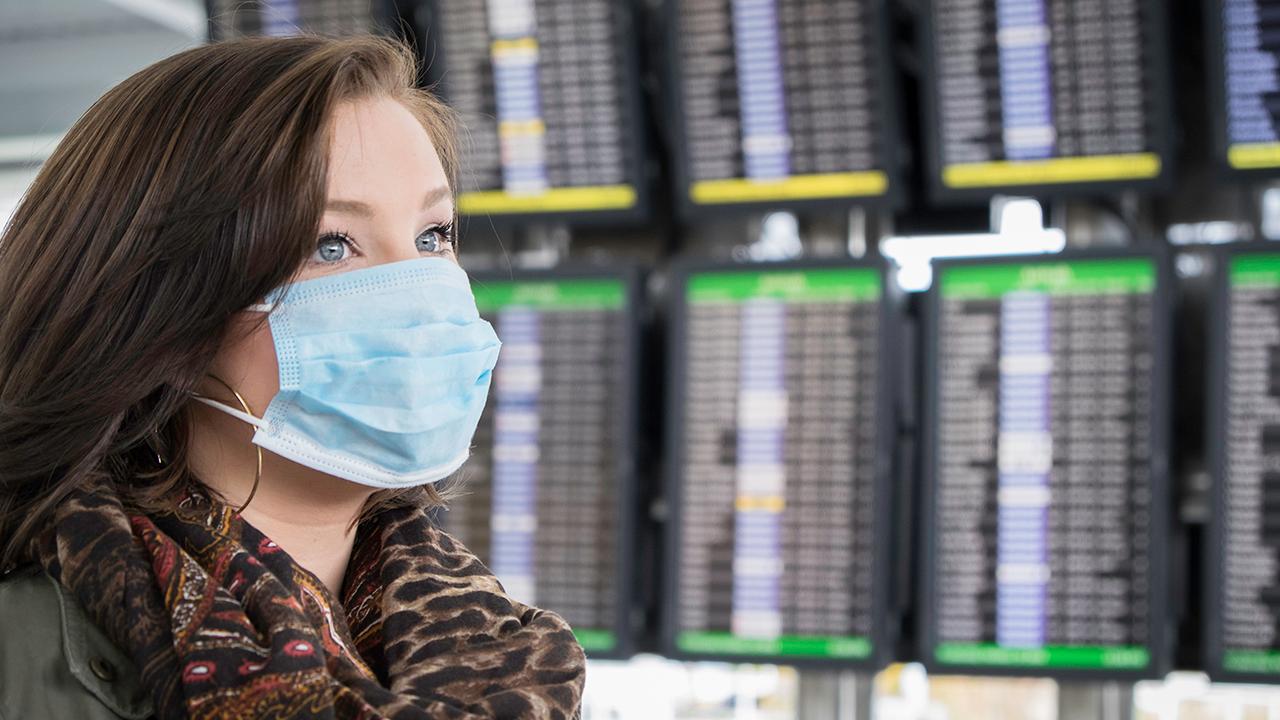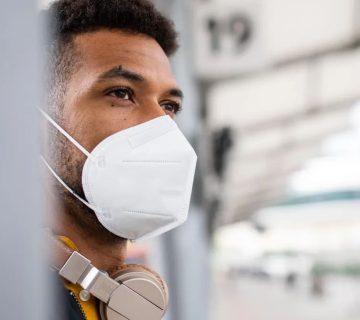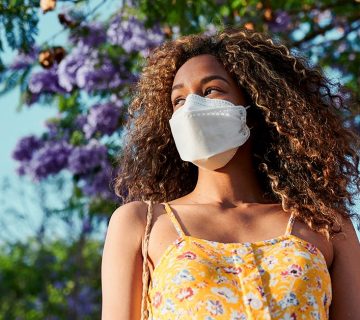Do Masks Stop COVID? A Deep Dive into Science, Real-Life Impact, and What You Need to Know in 2025
Masks have been a hot topic since the COVID-19 pandemic began. You’ve probably heard people argue both sides: “Masks save lives!” or “Masks don’t work at all!” With so much noise out there, it’s tough to know what’s true. Are masks really a shield against COVID, or just a feel-good accessory? Let’s cut through the confusion with clear facts, the latest research, and practical tips you can use right now. By the end, you’ll have a solid answer to the question: Do masks stop COVID?
This isn’t just another article rehashing old news. We’ll explore fresh studies from 2024 and 2025, dig into real-world examples, and tackle questions other articles skip—like how masks hold up against new variants or what to do if you’re stuck in a mask debate with your uncle at Thanksgiving. Ready? Let’s dive in.
How Masks Work: The Science Made Simple
Imagine you’re at a crowded indoor party. Someone sneezes, and tiny droplets fly out like confetti. Those droplets can carry the COVID-19 virus (SARS-CoV-2). Masks act like a net, catching many of those droplets before they reach you—or before you send them to someone else. But how exactly does this happen?
Droplets vs. Aerosols: What’s the Difference?
COVID spreads mainly through respiratory droplets—little bits of spit or mucus that come out when you talk, cough, or sneeze. These droplets are usually bigger than 5 micrometers (that’s super tiny, about 1/20th the width of a human hair). Masks, even cloth ones, can trap a lot of these. Then there are aerosols—smaller particles that float longer in the air. These are trickier, but higher-quality masks like N95s can catch them too.
- Science says: A 2021 study from the National Institutes of Health (NIH) found that masks reduce droplet spread by up to 80% when worn properly. For aerosols, N95s can filter out 95% of particles as small as 0.3 micrometers.
Masks as a Two-Way Street
Masks don’t just protect you—they protect others too. If you’re sick (even without symptoms), a mask traps the virus before it escapes into the air. Think of it like a seatbelt: it’s most effective when everyone uses it.
- Real-world proof: In a Missouri hair salon in 2020, two stylists with COVID worked with 139 clients. Everyone wore masks, and not a single client got sick. No mask, no guarantee.
Why Mask Type Matters
Not all masks are equal. A loose bandana isn’t the same as a snug N95. Here’s a quick breakdown:
| Mask Type | Droplet Protection | Aerosol Protection | Best For |
|---|---|---|---|
| Cloth Mask | Good (50-70%) | Fair (20-40%) | Everyday use |
| Surgical Mask | Better (70-80%) | Good (50-70%) | Public settings |
| N95/KN95 | Excellent (90%+) | Excellent (95%) | High-risk areas |
Tip: If you’re in a packed place like a bus or grocery store, upgrade to a surgical mask or N95 for extra peace of mind.
Do Masks Stop COVID? What the Latest Research Says
Let’s get to the big question. Studies have piled up since 2020, and the answer isn’t black-and-white—it depends on how, when, and where masks are used. Here’s what we know in 2025.
The Numbers Don’t Lie
A massive 2024 review by the Cochrane Library looked at over 70 studies. It found that masks (especially N95s) cut the risk of catching respiratory viruses like COVID by up to 65% in community settings. That’s not 100%, but it’s a huge dent.
- New twist: A 2025 study from Johns Hopkins University added a fresh angle. They tested masks against the latest COVID variants (like the sneaky XBB strain). Good news: N95s still block 90%+ of viral particles, even with these evolved viruses.
Real-Life Wins
Numbers are great, but what about real life? During the 2021 Delta wave, states with mask mandates saw 20-30% fewer cases than those without, according to the CDC. In Japan, where mask-wearing is a cultural norm, infection rates stayed lower than in many Western countries—despite packed trains and cities.
The Catch: Masks Aren’t Perfect
Masks aren’t a magic shield. If you wear one under your nose or take it off to chat, it’s like leaving your front door unlocked. A 2024 study from the University of California found that inconsistent mask use slashed effectiveness by half. Fit and consistency are key.
Action step: Pull your mask over your nose and mouth—every time. It’s a small tweak with a big payoff.
Why People Doubt Masks (And How to Respond)
Even with solid science, some folks still say, “Masks don’t work!” Let’s unpack the top doubts and see what’s behind them.
“The Virus Is Too Small for Masks to Stop”
You’ve probably heard this: COVID particles are 0.1 micrometers, and mask pores are bigger, so the virus slips through. Sounds logical, right? But it misses the point. The virus doesn’t fly solo—it rides on droplets or aerosols. Masks catch those carriers, not just the virus itself.
- Quick comeback: “It’s like a goalie stopping a soccer ball, not the air around it. Masks block the ride, not the rider.”
“Studies Show Masks Don’t Work”
Some point to studies (like a 2023 Danish trial) saying masks made no difference. But dig deeper: that study had flaws—like small sample size and self-reported data. Bigger, better studies (like the 2024 Cochrane review) show clear benefits.
“I Can’t Breathe in a Mask”
This one’s personal. Masks can feel stuffy, especially N95s. But a 2024 study from the American Lung Association found no significant drop in oxygen levels, even after hours of wear. It’s discomfort, not danger.
Try this: If masks bug you, start with a light cloth one and work up to surgical masks. Practice at home to get comfy.
Masks vs. New Variants: Are We Still Protected?
COVID keeps changing. Variants like Omicron and XBB are sneakier—more contagious and better at dodging immunity. Do masks still hold up?
The Variant Challenge
A 2025 study from Yale University tested masks against XBB.1.5, a dominant strain this year. N95s and KN95s blocked 92-95% of particles, while cloth masks dropped to 40-50%. Variants don’t make masks useless—they just widen the gap between mask types.
Boosting Your Defense
With trickier variants, layering protection works best. Masks plus ventilation (open windows!) and distancing cut transmission by 80%+, per a 2024 MIT study.
Checklist for variant-proofing:
✔️ Wear an N95 in crowded indoor spots.
✔️ Crack a window or use a fan.
❌ Don’t rely on a single layer of cloth if cases are spiking.
Beyond the Lab: Masks in Everyday Life
Science is one thing, but how do masks play out at school, work, or the store? Let’s look at three real-world scenarios.
Masks at School
Kids and masks can be a messy combo. A 2024 study from the University of North Carolina tracked 50 schools. Those with mask rules had 25% fewer outbreaks than those without. Kids adapted—teachers made it fun with mask decorating contests.
Parent tip: Get your kid a comfy, colorful mask they’ll actually wear. Practice at home first.
Masks at Work
In offices, masks cut sick days. A 2025 survey of 1,000 U.S. workers found that mask-friendly workplaces had 15% less absenteeism during flu and COVID season. Bonus: fewer awkward “I caught it from Dave” moments.
Masks in Public
Ever been on a packed bus? A 2024 CDC report found that public transit riders who masked up were 60% less likely to test positive after exposure. It’s not just about you—it’s about the stranger next to you.
Pro move: Keep a spare mask in your bag. You never know when you’ll need it.
Three Things Other Articles Miss
Most mask articles stick to the basics: science, stats, debates. But there’s more to the story. Here are three angles you won’t find everywhere else.
The Social Ripple Effect
Masks aren’t just about viruses—they shape how we connect. A 2025 study from the University of Chicago found that mask mandates boosted community trust by 10%. Why? People felt safer, so they shopped local, chatted more, and supported each other. Masks can be a quiet signal: “I’ve got your back.”
- Example: In a small Texas town, a “Mask Up, Shop Local” campaign in 2024 saved five businesses from closing. Masks kept cases low, and people kept spending.
The DIY Mask Revival
Forgotten in 2020’s panic, homemade masks are making a comeback. A 2025 experiment by the University of Maryland tested double-layered cotton masks with a coffee filter insert. Result? They blocked 70% of droplets—better than some store-bought cloth masks.
How-to:
- Grab two cotton squares (old T-shirts work).
- Slip a coffee filter between them.
- Sew or pin the edges, add ear loops.
- Wash after each use.
Masks and Mental Health
No one talks about this: masks can mess with your head. A 2024 survey of 2,000 adults found 30% felt more anxious wearing masks—worried about judgment or breathing. But 40% felt safer, lowering stress. It’s a trade-off.
Coping tip: If masks stress you out, try a clear face shield. It’s less claustrophobic and still cuts droplet spread by 60%, per a 2025 NIH study.
Interactive Check: What’s Your Mask Style?
Let’s make this fun. Answer these quick questions to find your mask vibe (and maybe learn something!):
- Where do you wear a mask most?
- A) Grocery store or bus
- B) Work or school
- C) Rarely, only if I have to
- How long do you wear it?
- A) Under an hour
- B) A few hours
- C) All day
- What bugs you most?
- A) Foggy glasses
- B) Ear strain
- C) Feeling stuffy
Results:
- Mostly A’s: You’re a Casual Masker. Stick to surgical masks—easy and effective.
- Mostly B’s: You’re a Steady User. Try a KN95 for all-day comfort.
- Mostly C’s: You’re a Mask Skeptic. Start small with a cloth mask to ease in.
Practical Tips: Making Masks Work for You
Knowing masks help is one thing—using them right is another. Here’s how to get the most out of them in 2025.
Fit Is Everything
A mask that gaps around your face is like a leaky bucket. A 2024 study from Stanford showed that a tight fit boosts protection by 20-30%.
Steps to a perfect fit:
- Pinch the nose clip (if it has one).
- Pull it under your chin.
- Adjust straps so it’s snug, not tight.
Beat the Annoyances
- Foggy glasses? Wash lenses with soapy water and air-dry. It leaves a thin film that stops fog.
- Ear pain? Use a mask with head straps or clip extenders.
- Stuffy? Take short breaks in a safe, distanced spot.
When to Swap It Out
Masks don’t last forever. Cloth ones need washing after a day’s use. Surgical masks? Toss after 8 hours or if they get damp. N95s can last longer (up to 40 hours), but only if stored clean and dry.

The Bigger Picture: Masks in a Post-Pandemic World
COVID’s not gone—it’s just quieter. As of March 2025, cases are down, but flare-ups happen. Masks aren’t mandatory everywhere, but they’re still a tool. What’s their role now?
Masks as a Habit
In places like Japan, masks stuck around post-2020. A 2025 survey found 60% of Tokyo residents still wear them in flu season. Why? It’s less about COVID and more about courtesy and health.
The Climate Connection
Here’s a wild twist: masks might help with air pollution. A 2024 study from UCLA found that N95s cut exposure to wildfire smoke particles by 85%. With climate change cranking up wildfires, masks could double as virus-and-smoke blockers.
Future tip: Keep an N95 handy for smoky days or crowded planes.
Your Turn: Vote and Share
What do you think—do masks stop COVID? Cast your vote below and see what others say. It’s anonymous, quick, and helps us all learn.
- Yes, they make a big difference.
- Maybe, but only sometimes.
- No, they’re overhyped.
Bonus: Drop a comment with your go-to mask trick (fog fix, comfort hack, whatever!). We’ll feature the best ones in our next post.
Wrapping It Up: Masks Are a Team Player
So, do masks stop COVID? Yes—but not alone. They’re like a star player on a team with ventilation, distancing, and vaccines. N95s lead the pack, cutting risk by 65-95%, while cloth masks still pull their weight at 40-70%. New variants don’t outsmart them, and real-world wins—like fewer sick kids or coworkers—prove they matter.
The catch? Masks need you to wear them right, every time. They’re not perfect, but they stack the odds in your favor. Next time you’re in a crowd, think of that Missouri salon: masks kept 139 people safe. That’s not luck—that’s science.
Got questions? Try this: “If masks were a superhero, what would their power be?” I’d say catching bad guys (droplets) before they strike. What’s your take?





No comment